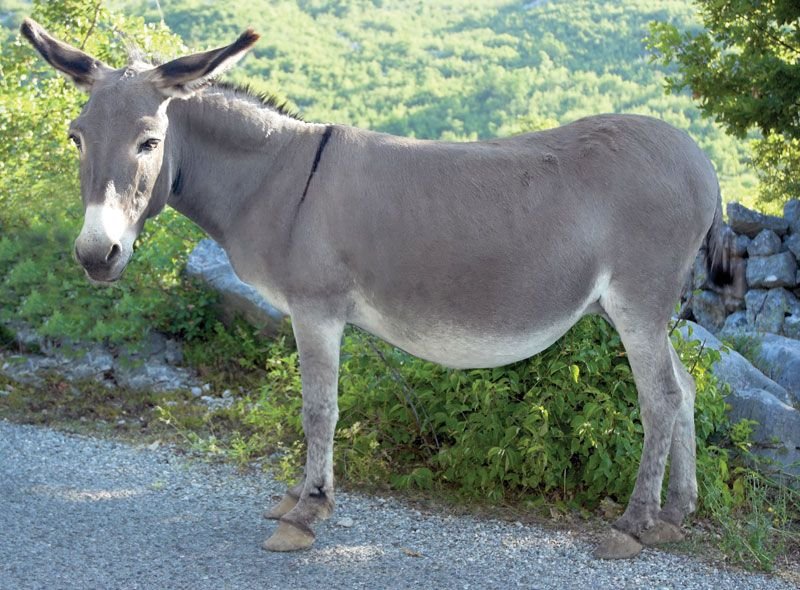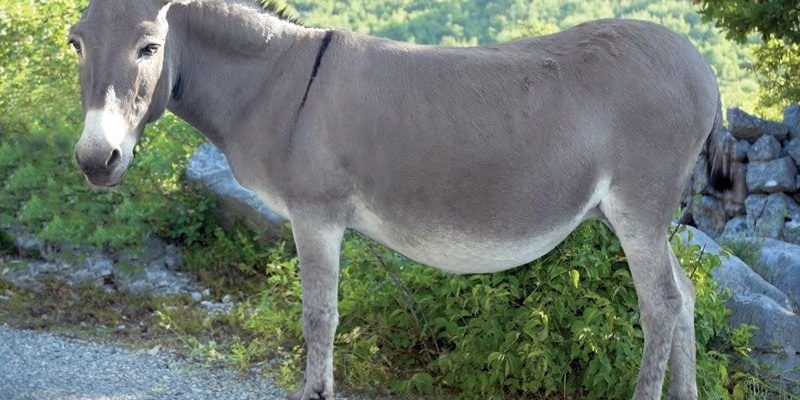
When you think of a donkey, you might picture a stubborn barnyard animal with a loud bray, but there’s more to these creatures than that classic image. Wild donkeys, often referred to as burros or wild asses, roam freely in various habitats across the globe. They are fascinating animals with a rich history, unique behaviors, and surprising adaptations that make them stand out in the animal kingdom.
In this article, we’ll explore the world of wild donkeys, diving into their habitats, diets, behaviors, and much more. You might be wondering how they survive in the wild and what makes them special compared to their domesticated cousins. Trust me; there’s a lot to learn!
What Are Wild Donkeys?
Wild donkeys belong to the species Equus africanus. They are descendants of domesticated donkeys that returned to the wild under their own will, usually after being abandoned or escaping. These remarkable creatures can be found in desert and arid regions, showcasing their adaptability and resilience.
Unlike their domesticated relatives, wild donkeys are known for their strong survival instincts. They live in groups called herds, which provide safety in numbers against predators. Within these herds, donkeys form social bonds, communicate with each other, and take care of their young, much like other social mammals.
You might be surprised to learn that wild donkeys can actually thrive in harsh environments. Their bodies are built for endurance, allowing them to travel long distances in search of food and water. This adaptability is key to their survival, especially in areas where resources are scarce.
Habitat and Distribution
| Region | Habitat | Climate |
|---|---|---|
| North America | Deserts, mountainous regions | Arid, semi-arid |
| Africa | Grasslands, deserts | Hot, dry |
| Middle East | Rocky terrains, deserts | Hot, dry |
Wild donkeys can be found in several regions worldwide, each adapted to its specific environment. In North America, for example, they primarily inhabit desert areas like the Great Basin and the Mojave Desert. These habitats are often rocky and rugged, making it easy for donkeys to navigate and seek shelter.
In Africa, wild donkeys inhabit grasslands and semi-desert regions. They are known to roam in the wild in places like the Namib Desert and across the savannas. What’s interesting is how they’ve adapted to withstand extreme temperatures, often being active during the cooler parts of the day, like early mornings or evenings.
The Middle East is another stronghold for wild donkeys, particularly in rocky terrains and arid deserts. Here, they’ve developed unique strategies to deal with drought conditions, which can be quite tough. Their ability to go long periods without water is truly impressive.
Physical Characteristics
Wild donkeys have some distinguishing features that set them apart from other hoofed animals. They typically have a sturdy build with long legs that allow them to navigate rocky and uneven terrains. Their fur is often short and coarse, providing protection against the harsh elements they face in the wild.
One of the most iconic features of wild donkeys is their distinctive bray. This loud and recognizable sound serves as a form of communication between herd members, helping them to stay in touch with each other even over long distances. Their large ears are also noteworthy, as they have an impressive range of hearing, making them alert to potential dangers.
Color-wise, wild donkeys can vary quite a bit. You may find them in shades of gray, brown, or a mix of both, often with lighter underbellies. These colors not only help them blend into their environment but also serve as a form of camouflage against predators. Their wild nature is evident in their size too; most adult wild donkeys stand between 3 to 4 feet tall at the shoulder.
Diet and Feeding Habits
Wild donkeys are herbivores, meaning their diet mainly consists of plant material. They are opportunistic grazers, feeding on a variety of grasses, shrubs, and even bark when needed. This wide-ranging diet is a key aspect of their survival, as it allows them to adapt to different environments and food availability.
One remarkable thing about wild donkeys is how efficiently they can extract moisture from their food. This ability is particularly beneficial in arid regions where water may not always be available. They have a unique digestive system that allows them to break down tough plant fibers, maximizing their nutrient intake.
As herd animals, wild donkeys often graze together, which not only helps them stay safe from predators but also allows them to share information about food sources. You might notice them using their keen sense of smell to locate fresh grass or tender plants. In the wild, a steady diet is essential for maintaining their energy levels and overall health.
Social Structure and Behavior
In the wild, donkeys are known for their close-knit social structures. They live in herds led by a dominant male known as a stallion. This leadership role is crucial for guiding the group to food, water, and shelter. Within the herd, you’ll find strong familial bonds, with mothers caring for their foals and other herd members helping to watch over the young.
Wild donkeys communicate through various sounds and body language. In addition to their loud brays, they may use soft grunts, snorts, and even physical gestures to express their feelings or alert the group of danger. If one donkey senses a predator nearby, you’ll often see the entire herd become alert, ready to react.
Interestingly, donkeys are quite intelligent and curious creatures. They’ll often engage in play behavior, chasing each other or interacting with their environment in playful ways. This play is not just entertaining; it also helps establish social bonds and maintain harmony within the herd.
Conservation Status
While domesticated donkeys are common across the globe, many wild donkey populations are declining. Factors such as habitat loss, hunting, and competition with domestic livestock have led to a concerning decrease in their numbers. Some species, like the African wild ass, are critically endangered, making conservation efforts vital for their survival.
Various organizations and wildlife conservationists are working diligently to protect natural habitats and create programs aimed at preserving wild donkey populations. These initiatives often focus on education, habitat restoration, and sustainable land management practices that benefit both the donkeys and the ecosystem.
As an individual, you can play a role in conservation too! Supporting wildlife organizations, spreading awareness about these animals, and advocating for their protection can make a difference. Every action counts when it comes to preserving the wild donkey for future generations.
FAQ
What do wild donkeys eat?
Wild donkeys primarily graze on grasses, herbs, and shrubs. They are herbivores with a diverse diet, which allows them to adapt to varying vegetation in their habitats. In arid regions, they can efficiently extract moisture from their food sources, which is crucial for their survival when water isn’t readily available.
Where can I find wild donkeys?
Wild donkeys can be found in various regions around the world, including North America, Africa, and parts of the Middle East. In North America, they are primarily located in desert areas such as the Great Basin and the Mojave Desert. In Africa, they roam through grasslands and arid regions.
Are wild donkeys social animals?
Yes, wild donkeys are highly social creatures. They live in herds led by a dominant male and form strong bonds with their group members. These social structures provide protection against predators and help them communicate about food and threats in their environment.
How do wild donkeys communicate?
Wild donkeys communicate through a variety of sounds, including brays and grunts, as well as through body language. They can use these forms of communication to alert the herd to dangers or to establish social connections within the group.
Are wild donkeys endangered?
Yes, many wild donkey populations are declining due to habitat loss, hunting, and competition with domestic animals. Some species, like the African wild ass, are critically endangered. Conservation efforts are underway to protect these animals and their habitats.
What is the difference between wild and domesticated donkeys?
The main difference lies in their behavior and living conditions. Wild donkeys are typically more independent, stronger, and have adapted to survive in harsh environments. Domesticated donkeys, on the other hand, have been bred for specific traits and are often more accustomed to living with humans.
How long do wild donkeys live?
Wild donkeys typically live around 15 to 20 years in the wild. Their lifespan can be affected by various factors, including environmental conditions, availability of food, and predation. In protected environments like reserves, they may live longer due to reduced threats.
What threats do wild donkeys face?
Wild donkeys face threats such as habitat destruction due to human activities, hunting, and competition for resources with domestic livestock. These factors contribute to the decline of their populations and make conservation efforts critical for their survival.
Can wild donkeys be domesticated?
While wild donkeys are not typically domesticated, some have been captured and trained in the past. However, their wild instincts and behaviors may make them unsuitable as pets. Domestic donkeys are bred specifically for human companionship and tasks, making them more manageable.
What adaptations do wild donkeys have for survival?
Wild donkeys possess several adaptations that help them survive in harsh environments. They are capable of traveling long distances to find food and water, can go without water for extended periods, and have strong hooves for navigating rocky terrains.

